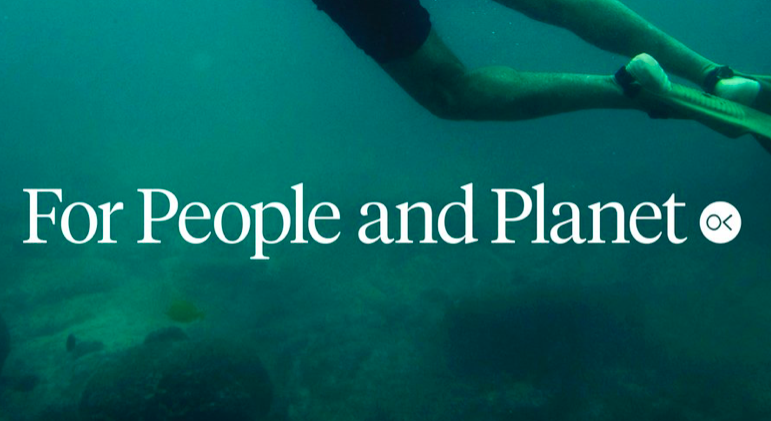
Consumers
Sustainability Has Become A Business Strategy Of Its Own For Luxury Brands
by
Meaghan Corzine | July 11, 2018
Is sustainability the new miracle marketing tool for luxury brands?
Eco-conscious consumers are doing more than getting rid of plastic straws at your local coffee shops, they’re completely evolving the way big luxury brands run their businesses. With millennial consumers more likely to invest their spending money in eco-friendly companies, top fashion and jewelry brands are reassessing the way they approach their products.
It’s no secret that consumer demands drive company initiatives and the decision to move toward more green business models. In fact, 40 percent of all companies said they took measures to incorporate eco-friendly policies or products into their business models in 2017, according to Green Matters.
For small businesses and start-ups in hipster neighborhoods, this comes as no surprise, but what about luxury brands that have been operating for decades — has there been a shift? Many market trends point to yes.
Join Luxury Society to have more articles like this delivered directly to your inbox
Baume by Baume & Mercier
Just take a look at the recently launched Baume by Richemont’s Baume and Mercier. The new brand, which debuted in May this year, serves as an entry-level product that focuses on sustainable manufacturing. It’s also notable to mention that Baume, though technically a sub-entity of Baume & Mercier, is functioning independently as a brand with an exclusive designer and strategy.
Baume is vowing to steer clear of using precious metals, precious stones and animal materials, as well as recycling and using natural materials as much as possible. The brand also plans on opening assembly facilities in several markets where the watches will be sold so as to cut down its transit and carbon footprint, according to Hodinkee.
Baume’s Iconic Series watch is made from partially recycled aluminum and 100 percent recycled plastic, and is priced from upwards of $1,100. The brand has married two concepts that appeal to 21st century consumers — affordability and ethical responsibility in the luxury sector.
Chopard’s “The Journey”
Swiss luxury watch and jewelry manufacturer Chopard has also started taking a similar approach. Coined by the company as “The Journey To Sustainable Luxury,” Chopard began setting new environmental and social standards for their production process.
“We became the first luxury watch and jewellery company to support and enable mining communities, and reach Fairmined certification. This certification will provide a stable route to market and a fair deal for the miners and their communities when selling their gold,” Chopard wrote in a press release.
In 2016, Chopard announced its plans to partner with Gemfields, the world’s largest producer of coloured gemstones, and pledged to fully validate emeralds by the Eco-Age’s Principles of Sustainable Excellence.
“Gold and gems are not solely a source of happiness: people and the environment can suffer from the consequences of mining and gold refining when these are undertaken irresponsibly,” Chopard Co-President Caroline Scheufele said at this year’s Baselworld.
Why Now?
So why are brands shifting toward more environmentally friendly policies and why now? According to a report recently released by the Harvard Business Review, climate change has made a direct global impact on water availability and crop production. Water-reliant crops such as cashmere, angora and cotton have all become more challenging to produce in an ethical way. When it comes to gold and diamonds, the industry has had huge issues with unethical sourcing prompting many luxury brands to take a stance on the issue. Tiffany & Co, for example, certifies its diamonds as “conflict free.”

Image credit: Breitling
Breitling’s Surfer Squad
In March of this year, Swiss luxury watchmaker Breitling teamed up with American surfer and icon Kelly Slater by partnering with sustainable apparel brand Outerknown, a clothing company committed to improving conditions for people and the planet. The collaboration will feature straps and packaging that respects Fair Trade principles and uses environmentally friendly and sustainable resources.
Earlier this year, Breitling began working with Ocean Conservancy to support the fight against pollution in oceans and beaches around the world.
A Necessary Shift
Though more popular than ever, brands’ efforts toward sustainability can be traced back to almost a decade ago.
In 2009, the World Wildlife Fund (WWF) dropped a report entitled “Deeper Luxury,” arguing for a necessary change in the way luxury brands approach their products, both for the sake of the environment and for the sake of their survival.
WWF noted that the 21st century luxury consumer is one that is increasingly well-educated and concerned with social and environmental issues.
“We observe shifts in the luxury paradigm, emerging from major changes in social dynamics. In the future, the highest quality product or service will be the one that generates the most benefit to all those involved in its production and trade,” authors of the study wrote.
Over the years, consumers have become increasingly cognizant of the harsh realities of the global environmental crisis and the impact of their purchase decisions. This has, in turn, prompted luxury brands to adopt their business and marketing strategies to match this shift in perspective. And while much remains to be done in addressing this pressing issue, it is as good a first step as any.
Cover image credit: Chopard.

